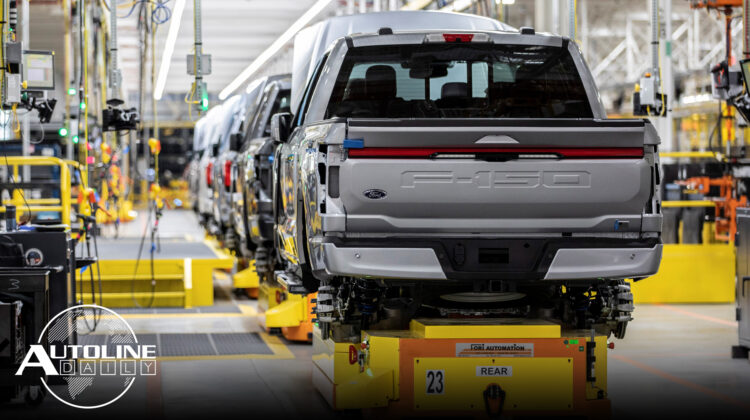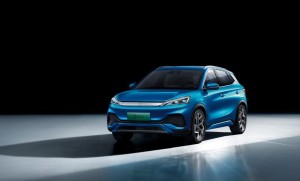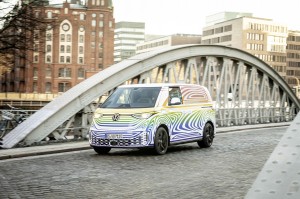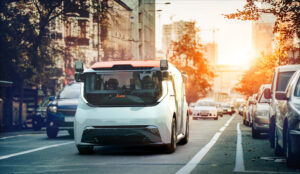
Listen to “AD #3265 – Ford Denies EV Spin-Off; Baidu Shares AV Operating Costs; VW Proves BEV Better Than ICE In Snow Storms” on Spreaker.
Follow us on social media:
Runtime: 10:15
0:08 Ford Denies Rumors of EV Spin-Off
1:26 Thousands of Cars Catch Fire on Cargo Ship
2:18 GM Launches Use Based Insurance Through OnStar
3:53 EV Battery Production Doubles In 2021
4:36 BYD Launches Yuan Plus with Innovative Blade Battery
5:43 Volkswagen Reveals More ID.Buzz Details
6:52 GM & Cruise File Petition to Put Origin Shuttle in Operation
7:38 Baidu Shares AV Operating Costs
8:47 VW Proves BEV Better Than ICE in Snow Storms
Visit our sponsors to thank them for their support of Autoline Daily: Bridgestone, Intrepid Control Systems and Schaeffler.
This is Autoline Daily, the show dedicated to enthusiasts of the global automotive industry.
FORD DENIES RUMORS OF EV SPIN-OFF
Rumors are running rampant that Ford is going to spin off its EV operations into a separate business. Ford denies it’s going to do that. But that hasn’t stopped the rumor mill. On a recent earnings call with analysts, CEO Jim Farley talked about how Ford has to run its EV operations very differently from its ICE operations.
“But I will go back to something we said and I’ve said over and over again which is, running a successful ICE business and the successful BEV business are not the same. The customers are different. We think the go-to-market is going to have to be different. The product development process and the kinds of products we develop are different. The procurement supply chain are all different. The talent is different. The level of in-sourcing is different. And actually the rhythm of the business is different — fundamentally different. “
So Farley sure sounds like he’s making the case to spin off Ford’s EV operations. We think that’s unlikely to happen, but change is in the air. We posted a video that goes into deeper details and you can find the link in today’s transcript or in the description box below.
THOUSANDS OF CARS CATCH FIRE ON CARGO SHIP
Did you see that cargo ship full of Porsches, Bentleys and Audis that caught fire last week? We’ve got more info and the news is kind of heartbreaking for any automotive enthusiast. It looks like it was a total loss. There were 4,000 cars on the ship, which is about a week’s worth of inventory. That may not sound too bad, but with inventory so tight right now, the shortfall can’t be made up anytime soon. Firefighters had a lot of trouble because the lithium-ion batteries in Taycans and eTrons on board caught fire and required special equipment to put them out. The ship, which was traveling from Germany to the U.S., will now be towed to another European country or the Bahamas later this week. Fortunately, the crew was evacuated and no one was hurt. So far no one knows what caused the fire.
GM LAUNCHES USE BASED INSURANCE THROUGH ONSTAR
Are you willing to let Big Brother look over your shoulder while you drive, as long as you can save money on your car insurance? Tesla is already doing it. And General Motors is betting that you’ll want it, too. The traditional way of setting insurance rates is based on age, occupation, gender, credit score, and education. So even if two drivers have exactly the same driving record, the one who makes more money and has a higher education will get a better rate. That’s why GM is rolling out a new insurance program through OnStar that allows good drivers to get lower insurance rates, no matter what their age, credit score or education. GM uses OnStar to track driving habits. And as long as you wear a seat belt and don’t drive erratically or speed, you’ll get lower rates. It’s also based on how many miles you drive. GM estimates that the OnStar insurance program could be worth $6 billion by 2030.
EV BATTERY PRODUCTION DOUBLES IN 2021
The amount of batteries going into electric vehicles doubled last year. According to SNE Research, battery makers produced nearly 300-GWh of total capacity in 2021 for hybrids, PHEVs and BEVs, including both passenger and commercial vehicles. That’s an increase of over 100% compared to 2020. China alone accounted for more than 50% of that total. And amongst the battery manufacturers, CATL is the largest, supplying nearly a third of worldwide battery capacity. LG is in the second spot with nearly 20% market share.
BYD LAUNCHES YUAN PLUS WITH INNOVATIVE BLADE BATTERY
In other battery related news, BYD is launching a new electric small crossover, called the Yuan Plus that features its blade battery. It’s a lithium-iron phosphate or LFP chemistry and rather than assembling cells into modules, the cells are mounted right into the pack or what’s called a cell-to-pack design. This takes up less space and because of the chemistry it’s also said to be safer. BYD claims it crushed, bent, heated, overcharged and punctured the battery with a nail and it didn’t catch on fire. The Yuan Plus features either a 50 or 60 kWh pack. On the WLTP cycle the 50-kWh battery is rated at 320 kilometers or about 200 miles of range, while the 60 kWh provides 420 kilometers or 260 miles of range. While it’s going on sale now in China, the electric CUV will also be offered in Australia and Singapore and could head for other European markets in the future.
VOLKSWAGEN REVEALS MORE ID.BUZZ DETAILS
Five years after it made its debut in concept form, Volkswagen is finally going to launch the ID. Buzz. It will come as both a 5-seat passenger and a cargo version. The battery pack has 77 kWh of usable space and sends juice to a 150 kW or 200 horsepower motor, which is mounted to the rear axle. The Cargo version with a partition behind the front seats has 3.9 cubic meters or 137 cubic feet of cargo room, which is more than a Ford Transit Connect. VW will also launch a version of the ID. Buzz with a longer wheelbase, which will be the version we get here in the U.S. Production kicks off in the first half of this year and will first go on sale in Europe in September.
GM & CRUISE FILE PETITION TO PUT ORIGIN SHUTTLE IN OPERATION
General Motors and its autonomous unit Cruise have filed a petition with the National Highway Traffic Safety Administration to build and put its Origin shuttle into commercial service. As you probably know, up till now GM Cruise has been using Chevrolet Bolt EVs that were retro-fitted with AV technology. But the Origin is a clean-sheet, purpose-built, all-electric, autonomous taxi. No steering wheel or pedals in that thing. It will be built at GM’s Factory Zero EV plant in Detroit. Cruise says the Origin will help open up mobility for all people, including those that have traditionally faced barriers to reliable transportation, like the elderly, the blind and others who face physical challenges.
BAIDU SHARES AV OPERATING COSTS
Baidu is the front-runner in China when it comes to autonomous cars. It’s already running autonomous taxi services in several Chinese cities. We were curious if an autonomous car is really cheaper to operate than a car with a driver, so we reached out to Baidu and it provided us with some fascinating numbers. Baidu said that the manufacturing cost of its 5th-gen robotaxi is only 480,000 yuan, or about $75,000. While that’s obviously more than a regular taxi would cost, this shows that autonomous technology is becoming quite affordable. Baidu told us that the monthly cost of operating one of its Apollo Go AVs for five years would be 8,000 yuan, or about $1,200. That’s the equivalent of what taxi drivers earn a month in major Chinese cities. So the autonomous taxi costs more, and the operating costs are the same. But remember, this technology is only just getting going. So the cost of AVs is going to come down, while the labor cost of drivers is only going to go up.
VW PROVES BEV BETTER THAN ICE IN SNOW STORMS
What if you got caught in a big snow storm on the highway, and you were stuck there for a day or two in an electric car? Would you freeze to death, or what? Volkswagen did a fascinating test to simulate an electric car caught in a snow storm where traffic was snarled up for days. It took a fully charged electric VW ID4 Pro S with an 82-kilowatt hour battery, and parked it outside in the cold, only 20 degrees Fahrenheit. Then it set the cabin temperature to 72 degrees, turned the driver’s seat heater on low and plugged in a cell phone. Then it left it there for three hours. VW then measured the energy consumption and extrapolated the data. Under those conditions, VW found that its electric car could keep the cabin at 72 degrees for 41 hours. A typical gas car with a full 15-gallon tank would probably run dry after about 30 hours. So by VW’s math the EV would keep you warmer, longer.
But that wraps up today’s show, thanks for tuning in.
Thanks to our partner for embedding Autoline Daily on its website: WardsAuto.com
Seamus and Sean McElroy cover the latest news in the automotive industry for Autoline Daily.










